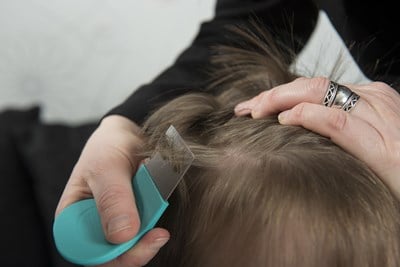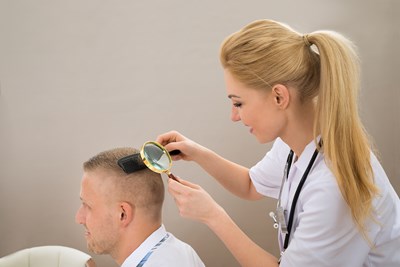All parents dread dealing with their child having head lice. Luckily, even though head lice can be a hassle and an inconvenience, they are relatively harmless—they don’t carry diseases or pose any sort of serious health concern. However, there are still some important things you should know if you are faced with an infestation.
What are head lice?
Head lice are the most common type of lice infestation, affecting nearly 12 million people in the United States each year. Head lice are very tiny insects that are about the size of a sesame seed. They feed on the blood from human scalps and cannot survive more than a day without a host. Their life span is about one month, and the female louse will lay up to ten eggs (nits) per day, attaching them to the hair shaft near the scalp.
Where do they come from?
Head lice spread primarily by head-to-head contact only. The insects are attracted to the specific temperature and humidity of the human scalp, so they typically don’t try to feed from any other location on the body. It is commonly believed that head lice result from poor hygiene. This is not true—actually, just the opposite; head lice are more attracted to clean scalps because they are easier to maneuver. Your child contracting head lice is not a reflection of your parenting or your family’s cleanliness.
How do you treat them?
Head lice will generally require two separate treatments before they are completely gone. One treatment and combing will usually get rid of most adult lice; however, it will not effectively kill any un-hatched nits. This is why coming back about a week later with another treatment is necessary for covering the entire life cycle of the insect.
How do you keep them away?
In order to ensure that treatment will be effective, check everyone in your family (including yourself) for lice before beginning treatment on your child. This is so all members of the family can be treated at once and to make sure that the lice are not passed back and forth. Also, once the lice infestation(s) have been effectively treated, some simple household cleaning can be beneficial for preventing them from coming back. Wash all clothes and bed linens in hot water and dry them on high heat. Seal all stuffed animals or other non-machine-washable items in a plastic back for at least two weeks. Soak all hair accessories, combs, and hair brushes in medicated shampoo or rubbing alcohol for one hour. Finally, vacuum you home, furniture, and car thoroughly.
What should you avoid?
Medicated lotions or shampoos might contain flammable chemicals, so don’t blow dry your child’s hair after applying these treatments. Also, don’t use more than one head lice treatment at a time, as the chemicals could have a dangerous reaction.



